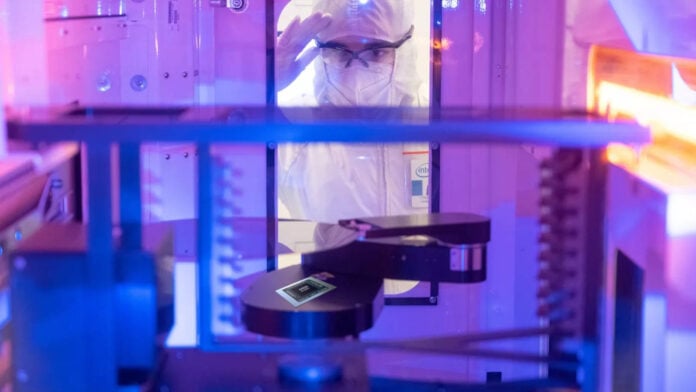Intel is reportedly in early talks with its rival AMD to supply some of its silicon needs, a task that has been exclusively handled by TSMC of late. If it succeeds, this will be seen as another vote of confidence in Intel’s foundry business, since AMD is unlikely to risk going for something of lesser value than what TSMC is offering.
According to Semafor, which is in contact with people familiar with this matter, AMD may start manufacturing some of its chips inside Intel facilities. While we don’t know how much of AMD’s production needs will be covered by Intel, anything would be welcome for the latter considering its recent financial struggles. Speaking of which, following this news, Intel shares rose about 7%, with a positive year-to-year movement of 77%.
Though a deal is not guaranteed yet, seeing how Intel managed to gain support from the US White House, SoftBank, and Nvidia in the past months, the chances of success are quite high. The United States government announced a 9.9% ownership stake in Intel, SoftBank purchased $2 billion worth of shares, with Nvidia grabbing another $5 billion. There are even reports of Apple exploring ways to work with Intel. Also, this wouldn’t be the first time AMD and Intel have worked together. Most notably, in 2018, they joined forces with the Kaby Lake-G lineup, combining an Intel CPU and an AMD Vega GPU. What is sure is that Intel is moving from gloom to bloom.
Considering how strong AMD has become both in the consumer segment through its Ryzen processors and the enterprise sectors via Threadripper/Epyc CPUs, it would be a mistake not to fight for a piece of the silicon cake. As a reminder, from the moment AMD sold GlobalFoundries, it relied exclusively on TSMC for all its manufacturing needs. While this can foster deeper integration with TSMC’s workflows, it can also become a liability during uncertain political times. Thus, choosing Intel as a second source allows AMD to diversify its supply, all while ensuring competitive manufacturing costs.
That said, this will only be possible if Intel’s processes close the gap with TSMC, as AMD is unlikely to select a trailing node for its flagship, high-margin products. Intel’s 18A and 14A are prime candidates for potential projects with AMD, but until volume production is at a satisfactory rate, nothing is certain. The company’s CEO, Lip-Bu Tan, has previously suggested that Intel could stop offering its 18A node if demand isn’t high enough.
Lastly, besides any cost or technology advantages that Intel may offer AMD, opting for a US-based manufacturer has other hidden positives. Doing so will put AMD in the good graces of the White House, all while avoiding any potential future tariffs. And since AMD is in a dominant position now, it can encourage Intel to settle for a better deal than what would otherwise be possible. Either way, seeing how many big tech companies are flocking to Intel, it wouldn’t be wise to ignore the situation.


